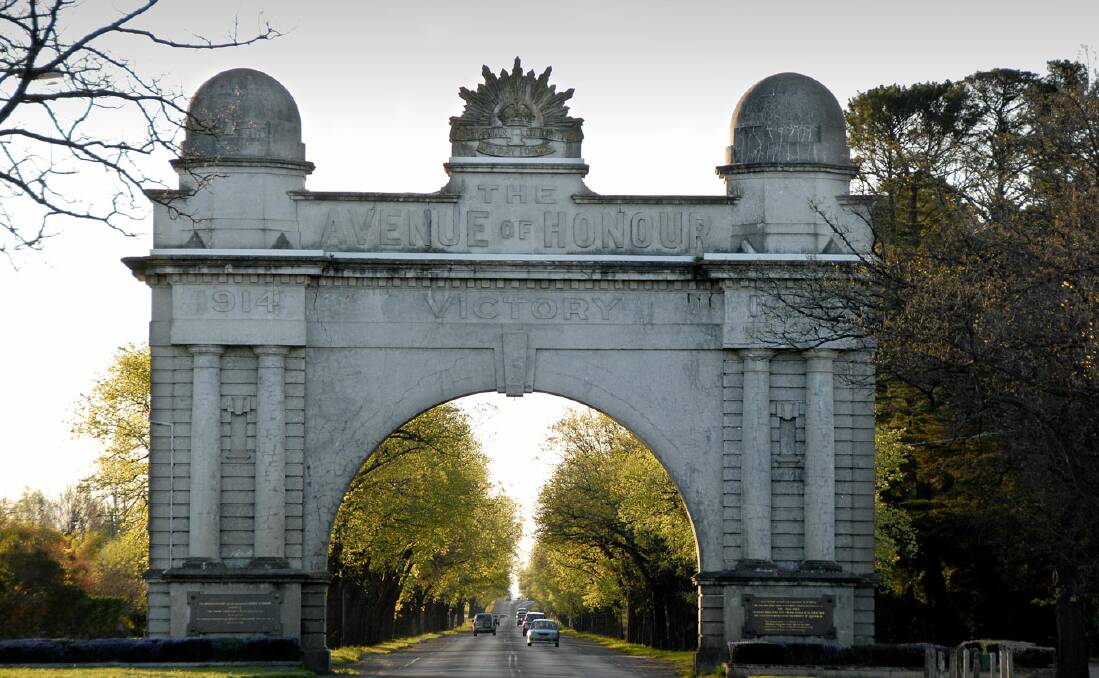
Ballarat’s Avenue of Honour has been handpicked to feature in an international art show in France.
Subscribe now for unlimited access.
or signup to continue reading
Avenues of Honour, an exhibition of 40 photographs of commemorative avenues of trees by Victorian photographer Sarah Wood, will open at the Franco-Australian Museum in Villers-Bretonneux this month ahead of Anzac Day.
Planted mostly in Australian regional towns in memory of those who served in war, tree-lined streets were a singularly Australian response to loss and the experience of war.
With no distinction between religion, race or rank, they are also a particularly egalitarian approach to commemoration.
There’s around 300 avenues in Victoria, with most planted after the two World Wars, but also following Vietnam and Afghanistan.
It’s believed the oldest was planted by the small rural town of Eurack, near Colac, in 1916.
The largest is at Ballarat, comprised of over 3,000 trees and stretching for nearly 22 kilometres.
And while many feature European trees, the Calder Woodburn Avenue planted near Shepparton after World War II is a double row of Australian eucalypts either side of the Midland Highway.
Despite differences, all are haunting and beautiful memorials to the servicemen and servicewomen who offered their lives for our country, and living records of each town’s commitment to remembering them.
Many avenues have been lost through development, drought or neglect.
Out of concern for the future of those remaining, Wood started recording heritage-listed avenues a decade ago.
“Driving through Victoria with my family when I was a child, my mother would talk to us about the significance of the Avenues and the different trees planted,” she said.
“Her father, my grandfather, saw action at Gallipoli and later became a founding member of the RSL for veterans and their families.
“So I grew up with stories of both World Wars. Photographing the avenues has been a labour of love that’s brought back many childhood memories.”













